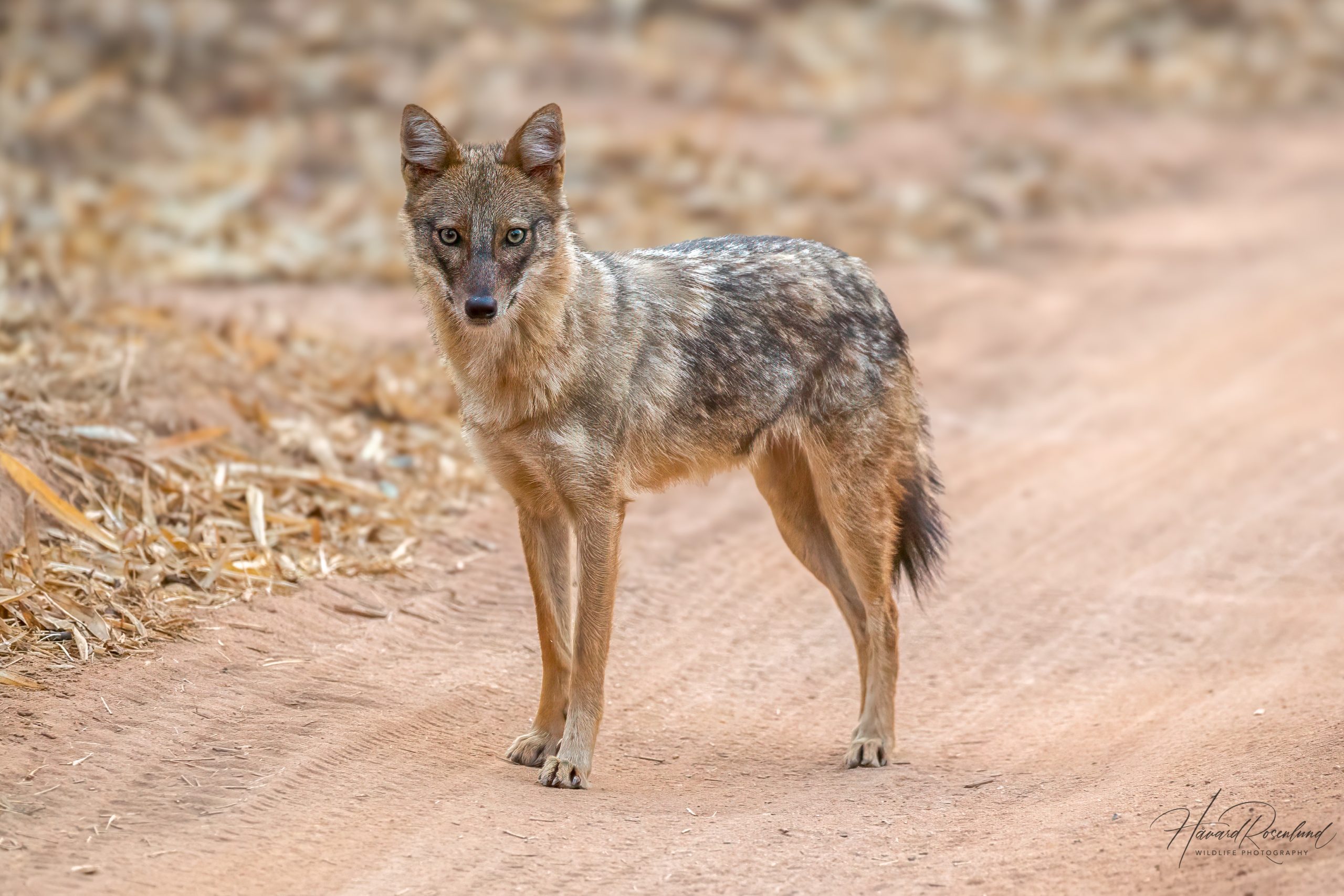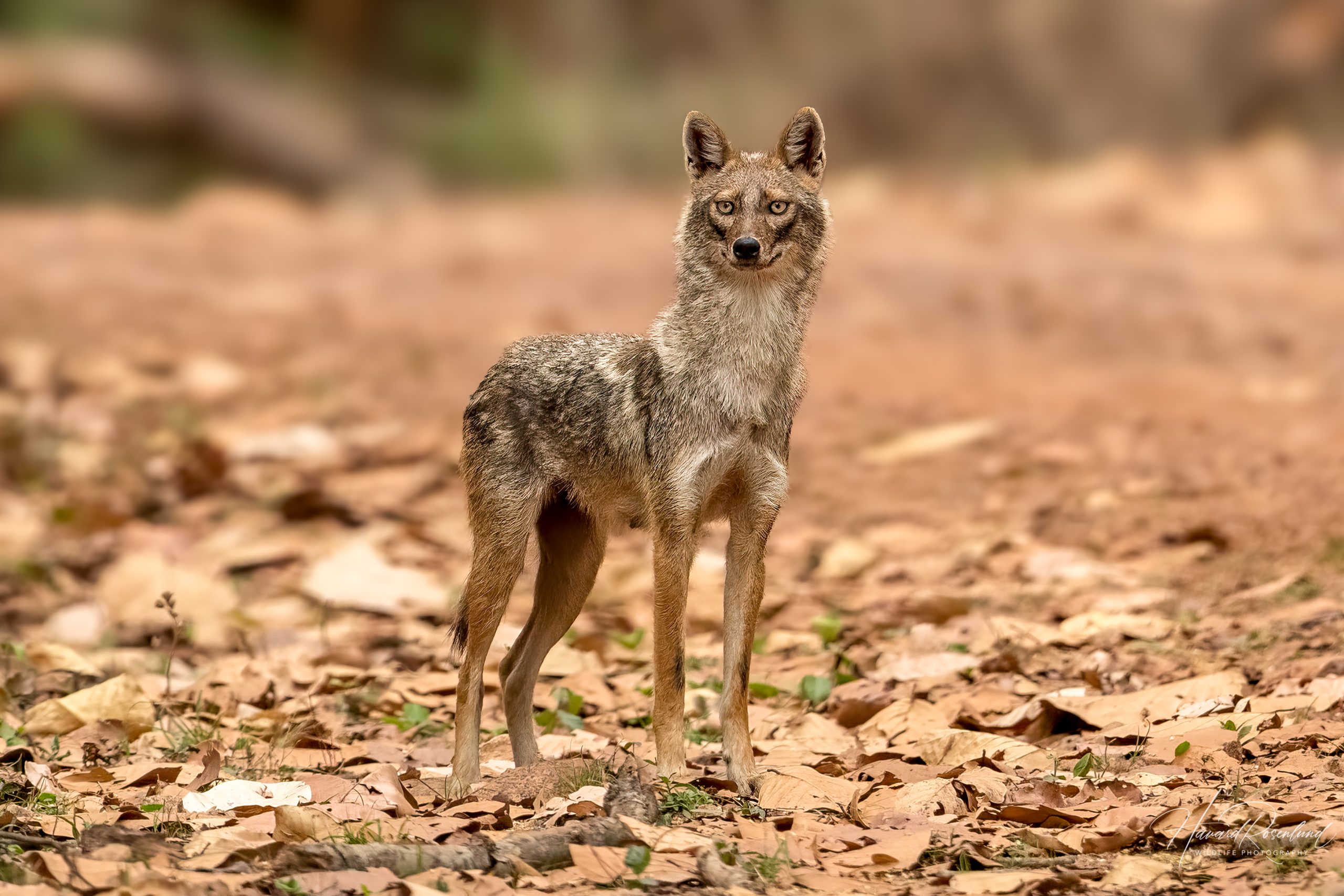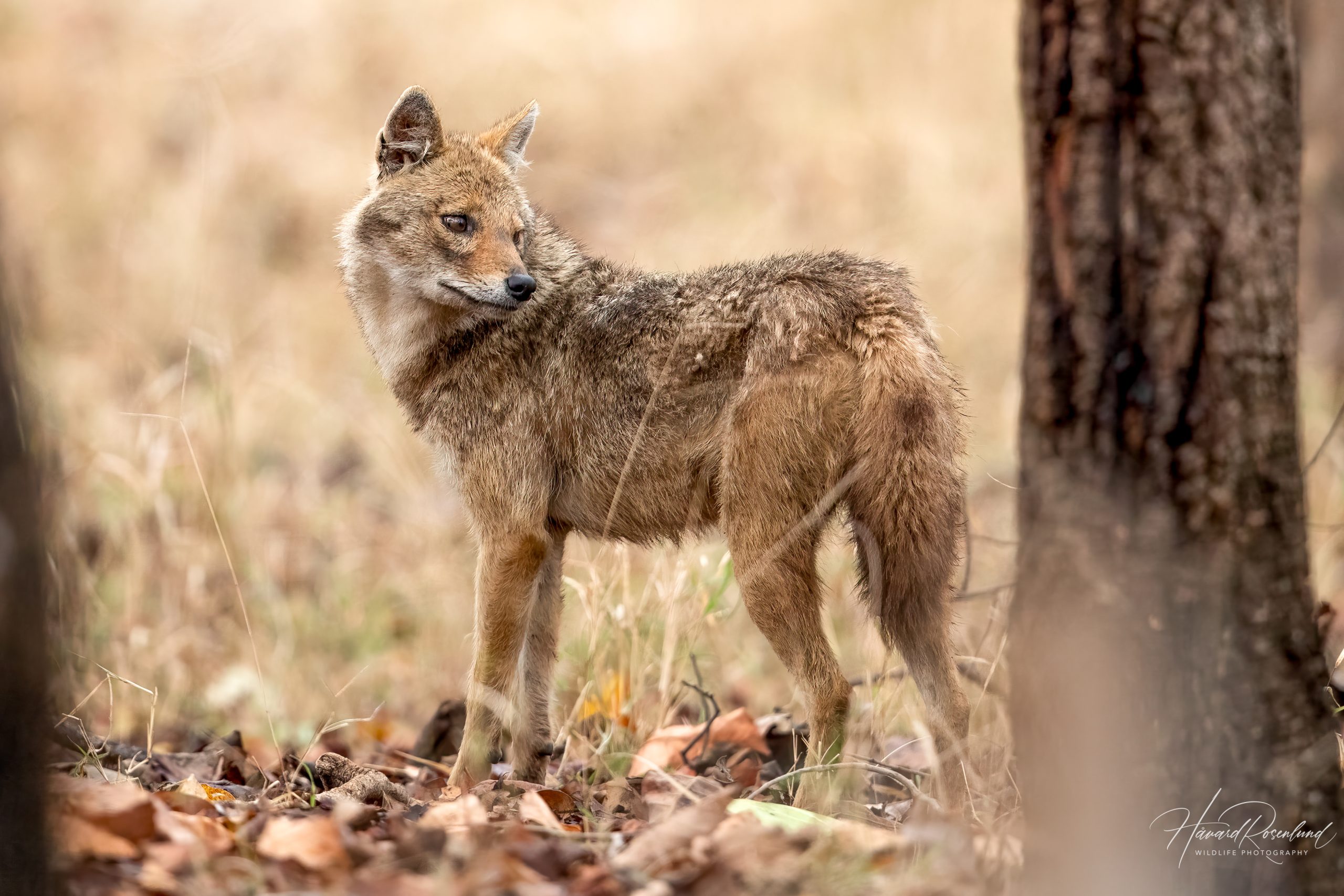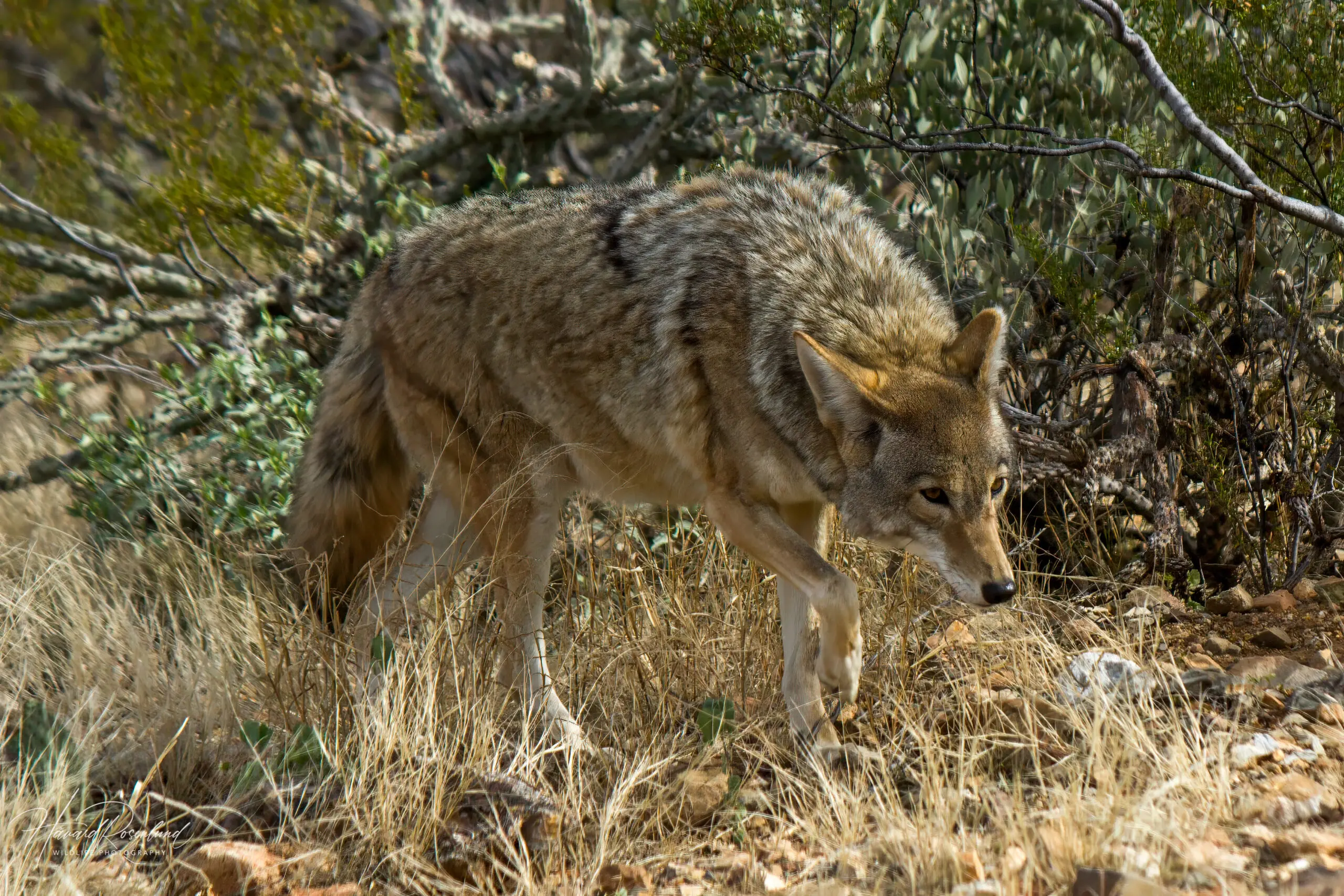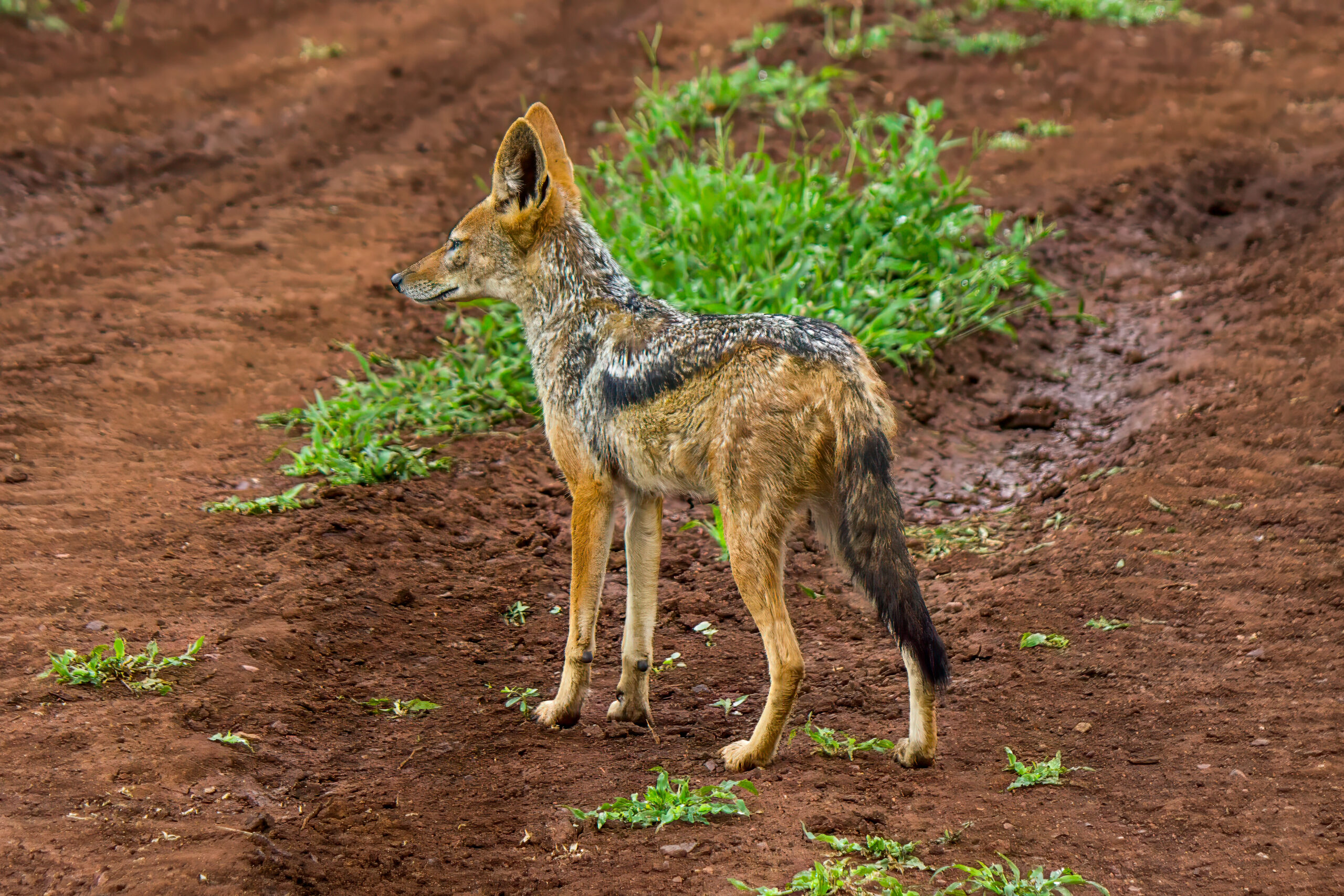Description
The golden jackal (Canis aureus) is a medium-sized canid native to southeastern Europe, the Middle East, and South and Southeast Asia. Adults measure about 70–105 cm (27-41 in) in length, with a tail adding an additional 20–30 cm (8-12 in). They stand about 40 cm (16 in) tall at the shoulder and weigh between 7–15 kg (15-33 lbs), with males generally being larger than females. These jackals can exhibit a range of coat colors, from pale gold to a reddish-brown or even blackish hue.
Golden jackals are similar in appearance to other canids, such as the coyote (Canis latrans) in North America and the grey wolf (Canis lupus). The golden jackal is smaller than both, and much smaller than a wolf. It is probably most similar to the African wolf (Canis lupaster), which was believed to be an African subspecies of the golden jackal for many years. Genetic studies have indicated that the African populations are a distinct species, and is, in fact, more closely related to the grey wolf. Albeit similar in appearance, the African wolf has distinctly larger ears than the jackal.
Diet & habitat
Golden jackals are highly adaptable and occupy a variety of habitats, including savannas, deserts, grasslands, forests, and agricultural areas. They are opportunistic feeders with a diet comprising small to medium-sized mammals, birds, reptiles, amphibians, and insects. They also scavenge on carrion and consume a substantial amount of fruit and plant matter. Near human settlements they often get close to houses to feed on garbage at night. Golden jackals hunt alone or in pairs, and sometimes in small family groups, especially when tackling larger prey, such as roe deer.
Behavior
Golden jackals are known for their versatility and resilience. They are primarily crepuscular, being most active during dawn and dusk, though they may adjust their activity patterns based on human presence and environmental conditions. Socially, they form monogamous pairs and live in small family groups. They communicate using a complex system of vocalizations, including howls, yips, and growls, which serve various social functions, from territory defense to family bonding. This species is a long distance disperser, meaning young individuals may travel long distances to find and establish new and suitable territories.
Reproduction
The breeding season of golden jackals varies geographically but generally occurs between October and March. They exhibit monogamous pairing and partners stay together for life. Both parents participate in the raising of young. After a gestation period of about 63 days, the female gives birth to a litter of 2–4 pups, though litters of up to 9 pups have been recorded. The pups are born blind and depend heavily on parental care for the first few weeks. They are weaned by 8–10 weeks and begin learning to hunt around six months. The life expectancy of golden jackals in the wild is approximately 8–10 years, although they can live longer in captivity.
Status
The golden jackal is currently listed as least concern by the IUCN due to its wide distribution and large population. However, some populations face threats from habitat destruction, persecution, and disease. In Europe the golden jackal has been expanding its range further west and north, with established populations now found as far west as Austria and Germany, and individuals getting observed as far north as northern Finland and Norway. This expansion is attributed to changes in land use, a decrease in the amount of snow in winter, fewer larger predators to control the population, and the adaptability of the species.





